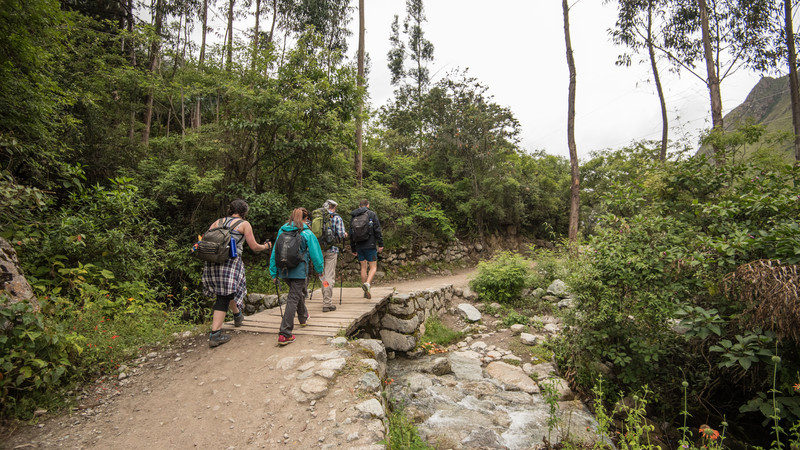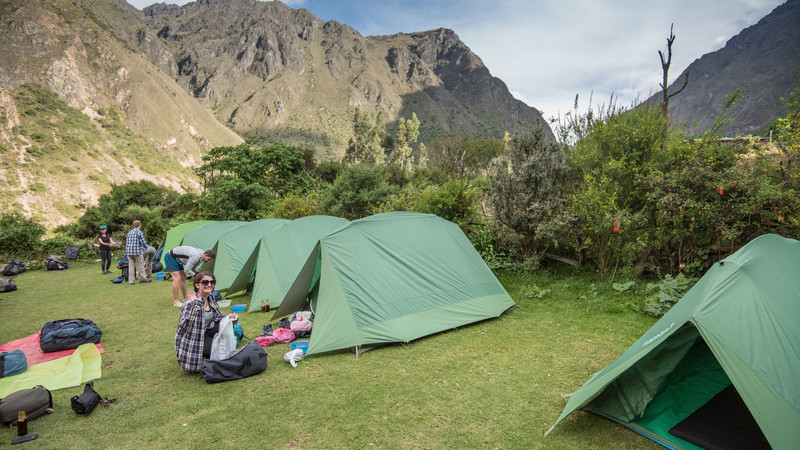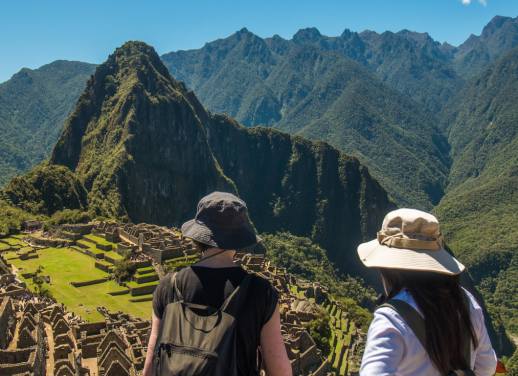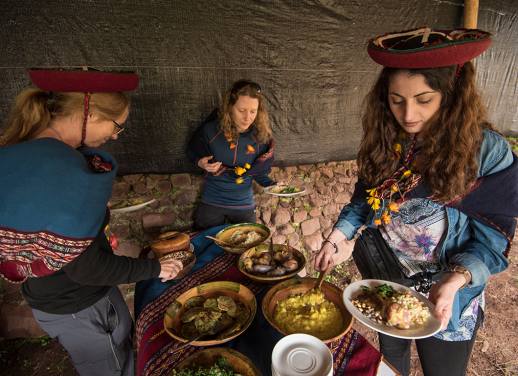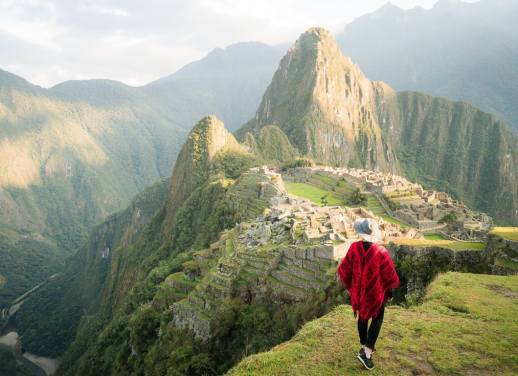Editor’s note: This article was originally published in March 2018 and updated in September 2022
So, you’re doing it. After months or years of gazing at photos of Machu Picchu, brushing up on your conversational Spanish and practising your best ‘selfie with llama’ face, you’ve finally booked a spot on a trek to Machu Picchu, via the famous Inca Trail, or the lesser-known (but equally beautiful) Inca Quarry Trail. Well done you.
While you’ve got many important things to consider, like getting a hiking permit (for the Inca Trail), booking your flights, and training for a high-altitude trek, the most integral element is often left until the eleventh hour: what to pack.
Avoid the last-minute panic – here’s your ultimate packing guide for a comfortable trek to Machu Picchu:
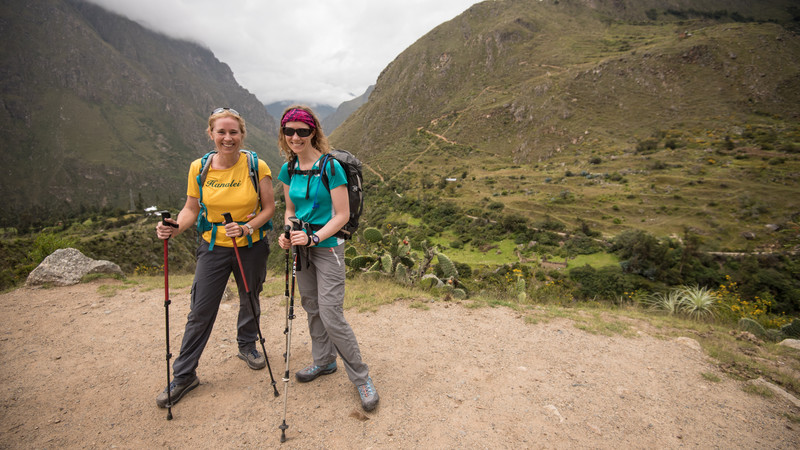
Trekking poles are not essential, but very (very) handy!
CHALLENGE YOURSELF ON A TREK TO MACHU PICCHU WITH INTREPID
First up: your bag
When you arrive at the pre-trek briefing with your group, you’ll be given a small duffel bag for your clothes, toiletries and sleeping bag. Your packed duffel bag has a five-kilogram maximum weight limit, so pack only what you need.
Your main luggage will stay at your hotel in Cusco, and you won’t have access to it until the end of the trek.
For the trek, you’ll need a small backpack, large enough to hold things you’ll need during the day – a light rain jacket, water bottle, high-energy snacks (chocolate, nuts, etc.), sunscreen, your phone/camera, and a hat.
RELATED: 7 THINGS NO ONE TELLS YOU ABOUT THE INCA TRAIL
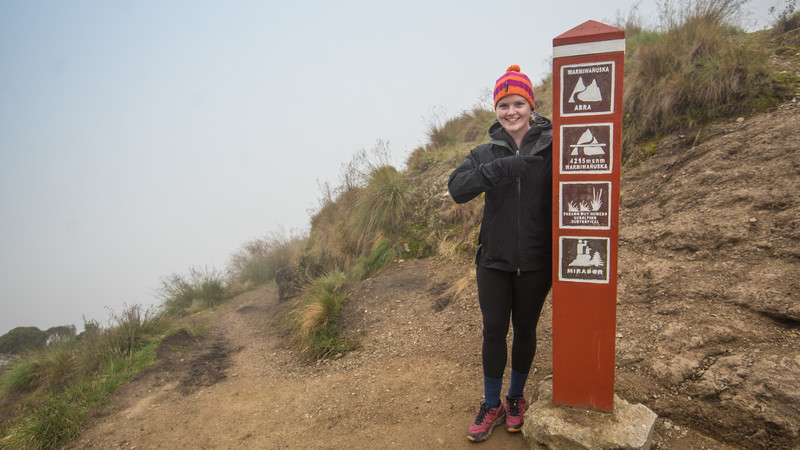
Rugged up on Dead Woman’s Pass
Next, the essentials
- Passport
You MUST take your passport (the original, not a photocopy). Keep it in a ziplock bag, in case it rains. - A sleeping bag
A four-season (-10) bag is suggested during winter, otherwise a three-season (-5) bag should be fine, depending on how much you feel the cold. You have the option of hiring a sleeping bag – just let your leader know at the pre-trek briefing. Hiring a bag will set you back around USD25. - A water bottle
You need to carry at least two litres with you each day. We suggest buying two x one-litre bottles (or a hydration bladder) that you can refill each day on the trek (cooled boiled water will be supplied daily). - Waterproof, worn-in hiking boots
This is important. PLEASE PACK COMFORTABLE, WORN-IN, WATERPROOF HIKING BOOTS!! Your boots should be lightweight, and have good ankle support and grip. There are a LOT of rocks and steps along the trail, and you don’t want to be slipping and sliding your way to Machu Picchu. Also, ill-fitting shoes can result in lost toenails. Just saying. - Day clothes
No matter the temperature, trekking definitely warms you up. It’s good to pack layers; clothes that you can easily take off and put on.
– Two pairs of long walking trousers (zip-offs are handy, but not a necessity) or exercise tights
– Two t-shirts
– Two long-sleeved t-shirts
– A lightweight rain-jacket or waterproof poncho
– Five pairs of thick socks
– Underwear
Your comfortable accommodation
- Night clothes
Keep these packed in your duffel bag, so there’s no chance of them getting wet during the day.
– One fleece jumper/sweater
– A pair of long pants
– Woollen hat and gloves
– Thermal underwear
– Flip flops/thongs (to wear around camp in the evening and give your feet a break from boots) - TOILET PAPER!!!
This is just as important as good shoes. One or two rolls should be enough. You should also pack some plastic bags, so you can bag up your paper and rubbish along the way (the porters carry rubbish in large bags). Many trekkers leave their paper on the trail after they relieve themselves, which is very uncool. - Basic personal toiletries
Prepare to embrace your grimy side – you won’t have access to a shower on the Inca Trail until day three, and the facilities aren’t particularly glamourous (you’re unlikely to have any hot water, either). We suggest packing a small towel, deodorant, and a packet of wet wipes – very handy in lieu of a shower. - A basic first aid kit
Think bandaids, Imodium, Panadol, rehydration sachets, antiseptic hand gel, insect repellent, and any personal medication you may need along the way. Your leader will have a first aid kit, but it’s good to include a few personal items (just in case). - Sunscreen, sunglasses and sunhat
- A standard torch/flashlight (a head torch is even better)
Why? Because when you crawl out of your tent to use the bathroom in the middle of the night, you want to be able to see where you’re going. A head torch negates the need to awkwardly balance your torch on the ground. Also, spare batteries. - A small amount of cash (USD40-55 in small denominations) to tip your guides and porters
RELATED: 6 REASONS TO TAKE THE INCA QUARRY TRAIL TO MACHU PICCHU
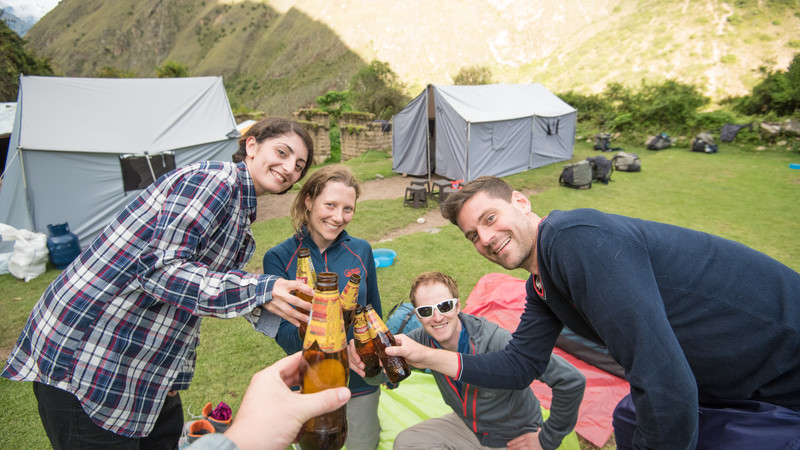
Cheers!
The nice-to-haves
- Trekking poles
These aren’t essential, but many trekkers find them incredibly useful. You can lean on them on the up walks, and they give you extra stability on the downs. You can hire these locally for around USD8 per pole. - Snacks
Snacks are provided along the way, but it’s nice to have a few extras in your daypack for when you need a little energy boost. Chocolate, chips, dried fruit and nuts, energy bars – whatever’s going to get you up and going. - A pillow
Pillows aren’t provided on the trek, so it’s up to you if you want to bring one. Remember, a pillow will need to be small enough to fit into your duffel bag. - A silk sleeping bag liner
You really only need this if you plan on renting a sleeping bag, however it does add a little extra snuggle on a cold night. - A couple of ziplock or plastic bags
To keep things dry in your daypack, and for your rubbish. - Ear plugs
Just in case you have a snoring tent mate. - A Spanish phrasebook
If you’ve got room in your ever-expanding backpack, and are interested in practising your Spanish language skills, a small phrasebook can be handy. Intrepid guides on the trail speak English and Spanish (most of the porters speak Quechuan).
Inspired? Book a spot on our Classic Inca Trail or Inca Quarry Trail to Machu Picchu.
All images by Patrick O’Neill

